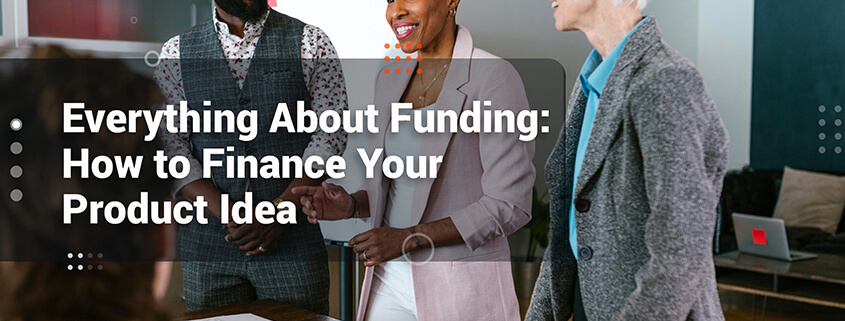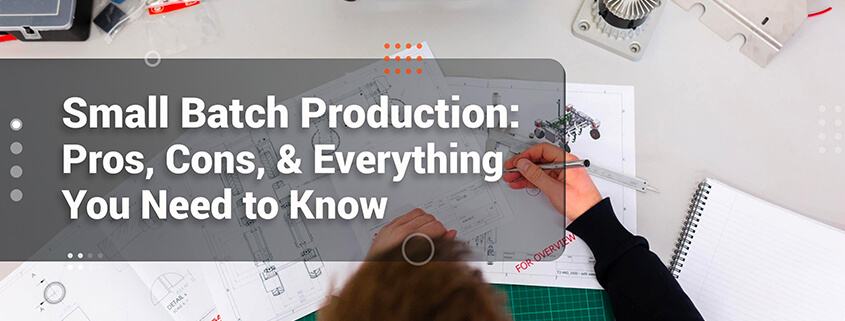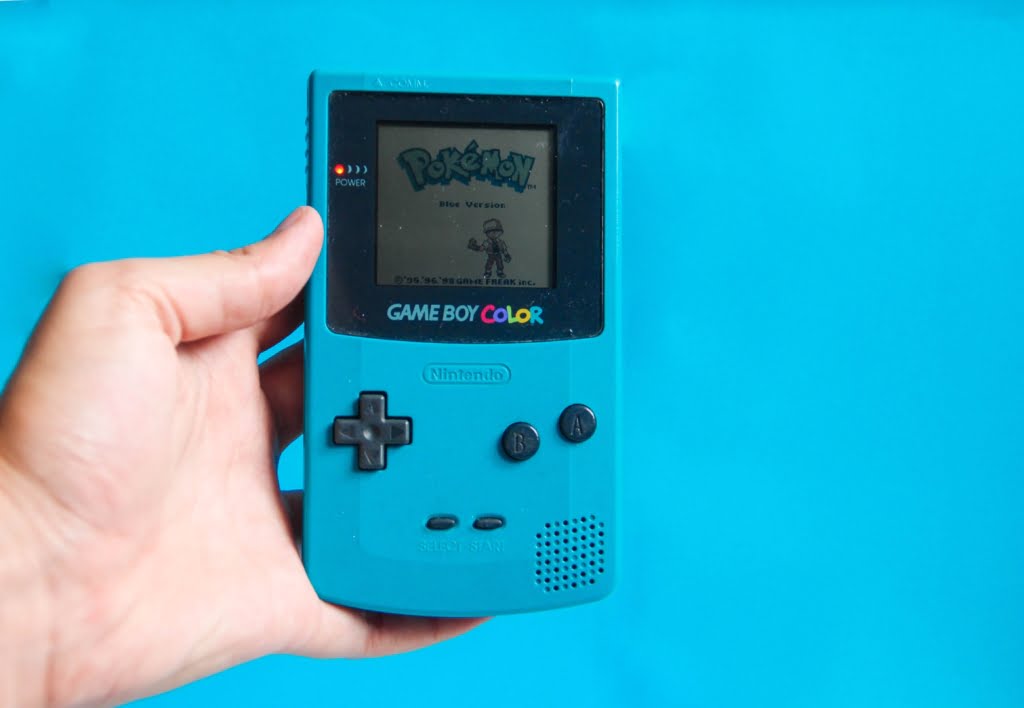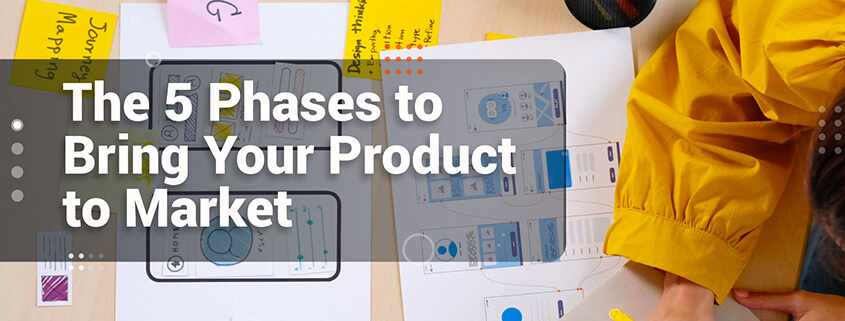Perhaps the most common hurdle that aspiring entrepreneurs and inventors have to overcome is funding.
After you’ve come up with a stellar idea that solves a real-world problem, you’ve got to find a way to pay for the product development and design process—as well as everything that comes after. And it’s not easy. We’ve seen firsthand how hard it is to get your product idea off the ground.
But, with a bit of research and hard work, you can get funding for your product. And in today’s day and age, you have more options than ever before.
In today’s article, we’re going to cover everything you need to know about funding, the 9 different types of funding, and how you can leverage it to bring your product idea to life.
Before You Look for Funding…
Oftentimes, first-time entrepreneurs jump the gun. What you might think is the next best product idea to be featured on a show like Shark Tank—might not be.
And so, before you spend too much time on your product idea, you need to make sure it’s worth pursuing. If you rush ahead you could make the same mistake the infamous Fyre Festival made back in 2017.
For those of you who don’t know, the Fyre Festival, which was planned and executed by Billy MacFarland, bombed catastrophically just a few years ago. And with its downfall went $3 million dollars of investment opportunities. MacFarland also went on to serve time in prison for committing fraud, receiving several lawsuits after the fact.
While that’s certainly the worst—and most unlikely—scenario, there are steps you should take to give your idea the best outcome possible.
Before you invest too much time and effort in your product idea, you need to make sure it’s viable. Because you’re not just creating a product—you’re starting a small business. And when you have a business-focused mindset, you’ll make smarter decisions in the short and long term.
Here are the 4 steps you should do first:
1. Research the market
Before you get too far, you need to see if there is a need for your product. This is one of the key steps in Product Validation. By finding a need or a gap in the market that your product can fill, you’re ensuring your idea is not just viable—but also profitable.
And if you’re going to convince someone to provide you with funding, you need to prove to them that you’ll be able to make that money back. Otherwise, they have no reason to invest in your idea at all.
Now, we’re not saying you need to prove you can sell your product to everyone on the planet. Instead, you need to prove there is a niche market out there that will purchase your product. If you’re trying to sell the next best razor and compete with massive companies like Gillette—you’re not going to get very far.
However, if you’re going to sell a subscription service to busy workers as Dollar Shave Club did, then you have a much smaller and highly-targeted niche. That makes it easier to stand out and own a small segment of the market.
Brian Chesky, one of the founders of Airbnb, phrased it best, saying to “build something 100 people love, not something 1 million people kind of like.”
2. Create a business plan
According to research from the Journal of Small Business Management, 71% of fast-growing companies have a business plan for their company.
When you clearly outline the next steps for your business, you’re going to be more prepared than other entrepreneurs out there. You’ll have a more defined structure, be able to clearly define your goals and account for future obstacles. Plus, it allows you to track your progress as you scale your business.
And most importantly—you can more easily secure external finances or loans.
When you can outline your financial projections and show clear marketing strategies, not only will you feel more organized and prepared, others will too.
3. Gather feedback about your product
After you’ve done some preliminary research and drafted a solid business plan, you can start actually designing the product. This is the product design and development phase. And let’s be real, it’s the most fun part.
Here you get to put the pieces together—literally—to create a prototype. After several versions, you should end up with a Minimum Viable Product (MVP). This is still part of the early stage of the final product, but it’s useful in helping you get feedback.
At this point, you want to send the product to some early beta testers and critique. Most likely, this will consist of yourself and close family or friends. However, it’s also a good idea to find potential customers in your target market to test it out as well. Their feedback is the key to once again confirming your product is something consumers will want and use.
4. Hire some professional help
Finally, the last step you need to take is to get help from experts who have done it before. Whether you’re hiring a business consultant or a product design firm, it’s a good idea to reach out for professional advice.
Not only will they help you make sure you are following all necessary regulations, like patent application requirements or getting product certification, they will also help you with things like packaging design and prototyping.
After you’ve followed these 4 steps, you’re ready to go out there and get funding for your product idea.
How To Get Funding for a New Product Idea
It’s the most common question we get from our clients—and we understand why. One of the number one reasons small businesses fail is due to a lack of funding or working capital, according to Investopedia.
And when it comes to finding someone who will invest in your product idea, that’s harder than you might expect—especially if it’s your first time launching a product.
Why Getting Funding is Difficult for Startups:
When it comes to investing, there are a lot more people out there pitching ideas to VC firms than there are investors willing to take on the risk of a startup. And that’s not likely to change anytime soon.
In fact, according to a survey from Gallup, 77% of founders cited personal savings as their main source of funding for their startup. And an article from Entrepreneur reported that only 0.05% of startups actually manage to raise any venture capital. After reading those statistics, it’s easy to be disheartened.
On a positive note, there are a lot more ways to get your small business off the ground than there were in the past. And, if you play your cards right—your product could take off.
What Are the Different Types of Funding?
There’s no one “right way” to fund a business, but some methods are easier than others. So, you need to evaluate all the options available and find one that is best for you. While you can rely on one type on rare occasions, most businesses acquire funding from a variety of different sources. The type of funding you go for will also depend on what stage you are in your business because some are only relevant for startups.
Thankfully, when it comes to acquiring funding or working capital, you have a lot more options today than you might have had 10 years ago.
Here are 9 different ways to fund your product idea:
| Funding Method | How It Works |
| Personal Investment | Also called “bootstrapping,” this is money out of your own pocket you invest. |
| Patient Capital | Patient capital or “love money” is loaned to you by a friend or family member. |
| Crowdfunding | This involves using online platforms that help you raise small sums of money from a large number of people interested in your future finished product. |
| Pitching Competitions | These are competitions that give you a chance at funding your product idea as well as feedback on your pitch. |
| Bank Loans | This is money from a business loan provided by a bank. A bank won’t require shares in your business, but you’ll have to follow a repayment plan. |
| Startup Accelerators & Incubators | These organizations offer a full range of resources to new startups, including office space, mentorship, and connections to potential investors. |
| Angel Investors | An “angel” is a single wealthy individual, often a retired executive, who invests in exchange for a share in your business. |
| Venture Capital | Venture capital firms are companies that actively look for startups to invest in, and they will often invest greater amounts than angel investors. |
| Government Grants | This refers to types of government funding, which will vary depending on your region. |
Let’s explore each of these a little bit further.
- Personal Investment
Funding it yourself is a choice that many first-time business owners make when starting their foray into entrepreneurship. The advantage is that you’ll be the sole owner of your enterprise, wielding full control.
However, an obvious downside is that this is all your money we’re talking about. Dipping into your personal savings does come with its own risks. That may have been money for your kid’s college education or for the mortgage on your house. So, if you go this route make sure you’re still leaving yourself with some savings and not going into major debt.
Take Yvon Chouinard, the founder of Patagonia, as a shining example. In the 1970s, he simply started selling a variety of pitons (small metal spikes used by mountain climbers). Eventually, he would go on to sell clothing as well—and Patagonia was born and funded solely by its annual profits.
- Patient Capital
Colloquially, you may have heard of this referred to as “love money.” Patient capital is loaned to you by a friend, parent, spouse, or other family members, and it is quite common for first-time business owners.
However, keep in mind that this will often provide only a small source of needed funding. Additionally, getting a loan from relatives changes your dynamic and you now have a business relationship that needs to be navigated with care. Often, the person providing funds is given a share in the company or repaid later.
When done correctly, patient capital can be a great help in getting your business off the ground. Jeff Bezos famously started Amazon with $300,000 from his parents—and we both know how well that worked out.
- Bank Loans
While the first two funding methods are very common, not everyone has thousands of dollars in their savings accounts or relatives willing to invest in your idea. Because of this, a large number of entrepreneurs turn to banks for assistance.
Bank loans are the most common type of business loan—and you can approach different banks to see which one meets your needs. A major obstacle with securing a bank loan is that banks may want to see historical evidence that you can run a lucrative business. Excellent credit is also expected.
On the positive side, you only have to worry about making the repayments, and you are still in full control of how you run your own business.
- Crowdfunding
While some of the more traditional funding options involve loans, there are more recent options like crowdfunding. When the first crowdfunding platform, ArtistShare, launched in 2001, it set off a huge trend for funding projects digitally.
Crowdfunding involves raising funds by collecting a small amount of money from a large number of individuals, usually through an online platform. Today, there are plenty of options like Kickstarter, GoFundMe, and IndieGoGo.
Some of the key benefits of crowdfunding are that you aren’t required to give any of the finances back or give up any control in your business. However, when you use a crowdfunding platform, the individuals contributing are doing so under the pretense that they will receive a finished version of your product. If you don’t follow through, then you could face lawsuits and a huge media backlash—like the “Coolest Cooler” failure back in 2014.
As you can imagine, crowdfunding is hard. Instead of trying to convince a handful of people to support you—you need to convince thousands. Thankfully, there are full-service marketing agencies available out there that can help.
One option we often recommend to our clients is Launchboom; they’re one of the leading crowdfunding companies out there, specializing in getting funding even on the first day of your campaign.
- Pitching Competitions
A more uncommon way to fund your product idea is by entering a pitching competition. This can be anything from a TV show, like SharkTank, to a local competition in your city. Sometimes, companies even host their own pitching competitions like Cards Against Humanity did with their web show, Tabletop Deathmatch.
Typically, the investors will ask for a stake in the company, but in some competitions, the winners get the prize money and they don’t have to repay it. However, there are usually entry fees to compete in these to pay for the cost of the event.
Similar to VC funding, you need an epic product idea to impress the judges. If you think you have a good chance, then it’s a no-brainer. But even if you don’t, entering the competition can still provide you with other benefits. When you submit your idea, you will get valuable feedback on your product which is useful even if you lose.
- Incubators & Accelerators
A startup incubator helps startups by providing early funding and they don’t typically seek any equity. Their goal is to help you get to what’s called the MVP stage so that you can then apply to a startup accelerator program.
After you’ve got a product in hand, you can apply to a business accelerator. These organizations will provide office space, management training, and a range of other services to startups. However, unlike incubators, accelerators do usually ask for equity in exchange for their help and funding.
In both cases, incubators and accelerators support a business through its early stages and provide a lot of mentorship and support. Another benefit is that they can connect you with other funding sources, such as VC firms, angel investors, and banks.
The downside is that you can’t rely on them in the long term. They’re designed to help businesses in the startup phase specifically. And while they provide you with ample opportunities, they do often still require a share in the company. Because they have so many resources, they tend to be quite competitive and difficult to get into as well.
- Angel Investors
Angel investment describes when a wealthy or high-net-worth individual decides to fund your business. Typically they will do so under a few conditions—namely a share in your company and a seat on the board of directors. You may also hear them referred to as a private investor, seed investor or angel funder.
While you will no longer be 100% in charge of everything, an upside here is that your angel investor can bring relevant business experience that goes a long way in aiding your success. And as a first-time entrepreneur—that business guidance gives you a huge leg up.
That being said, in most cases angel investors are usually connected to the startup in some way, like through friends or family. However, you can also find them through angel-specific organizations and websites. Generally, they keep a low profile and will need to be sought out.
- Venture Capital
In addition to individual investors, some corporations also exist just to invest in startups. These venture capital firms want to fund businesses that have high growth potential, and they usually go for those in sectors such as biotech and IT.
If you can present them with a killer business plan and convince them it will pay off, then you have a better chance of getting VC funding. Plus, a venture capitalist can also provide additional expertise and resources.
The downside is that you will have to give up some control of your business. Since they’re fully invested in making sure your company grows and turns a profit, the VC firm will have strong opinions on what’s best. Facebook is one famous example of a company that benefited from VC funding, and it was partially due to the fact the company had a valuation of $100 million (USD) in 2005.
- Government Grants
Finally, the last way to fund your business idea is with grants offered by your government. A grant is a contribution that is not expected to be repaid, but you will have to follow certain terms as to how the money is to be utilized. For example, a business that is developing technology that helps deaf people could be allocated money for research and equipment.
In the United States, the government only awards grants to nonprofits and educational institutions. That being said, they do still give out loans to businesses. Many other countries also provide business grants, so make sure to research what’s available in your country.
Key Takeaways
At the end of the day, it’s important to remember you’re not just creating a product—you’re starting a business. And with that comes a lot of challenges. From creating a viable prototype to securing funding, there are a lot of steps involved when creating a product that succeeds.
Whether you’re a first-time entrepreneur or an inventor with years of experience, it’s still overwhelming to do it by yourself. Luckily, there are ways to make it easier and find the support you need. One way to make the process easier is to work with a product design firm that’s done it before—and can help you get through the hardest parts.
We’ve helped our clients bring their product ideas to life, and we can help you do the same. Reach out today and we’ll help you with everything from product validation to prototyping.
About the Author:
Ventrify is a product design and manufacturing firm that helps entrepreneurs bring product ideas from concept to market. We take in fledgling ideas and bring them through our iterative design process to create products our clients can be proud of. Then, we work with manufacturing facilities worldwide to bring our clients the highest quality products at competitive prices.
If you have questions about using prototypes in your product development journey or need help, reach out to us through our Website, Facebook, or LinkedIn.
Article by Victoria Fraser






